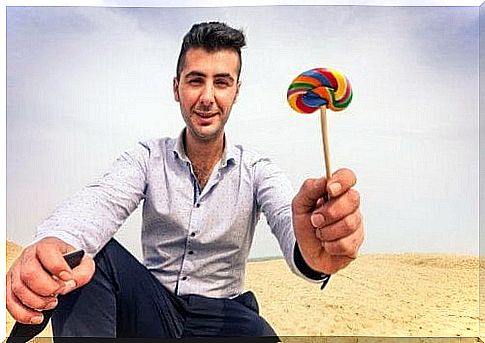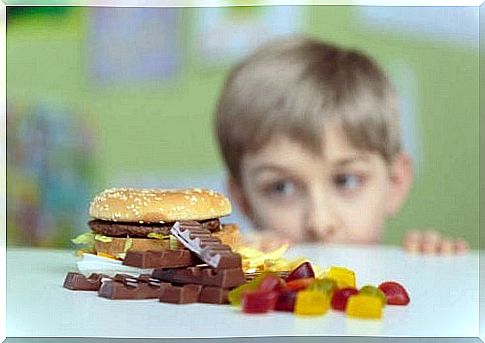Teaching Children Not To Accept Food From Strangers

We’ve all heard the same stern warning from our parents: “Don’t take food from strangers.”
One of the situations that worries parents the most is when a stranger offers their children food without their consent. What can we do to prevent this from happening?
This situation can be difficult for children to understand and act on. From their perspective, it is about distinguishing between mature authority and protection against a potential risk.
In today’s world there is an endless list of oral drugs that are completely undetectable. Of course, the context does not always refer to criminal intent. Usually it has to do with some kind of ‘friendly gesture’. However, it is not appropriate.
For example, children may be allergic or intolerant to the food being offered and a stranger may not know this.
Our children are learning to be selective
Perhaps this lesson can lead to children becoming shy or more anxious. However, if we teach our children to be alert and to judge well, they can better protect themselves.
The first thing we should tell our children is that they should only go to adults who know their parents. Over time, children must learn to understand that accepting candy or other things from strangers can be dangerous.
Therefore, what they should do is ask their parents or other trusted adults for permission before accepting a gift.
It is very helpful to know how to identify relatives and other adults they can trust. That way they know where to go when they are alone and someone approaches them. We should therefore always provide them with a self-protection action plan.
Three keys when it comes to strangers feeding your kids
- Sign of danger: When strangers offer food or gifts, children should learn to see it as something bad. We must be clear and explain the dangers associated with this situation.
- Feeding under the supervision of a parent: Even if your child is given something, he or she should get into the habit of showing it to a trusted adult first. Parents and teachers can then give or refuse permission to eat it.
- Secret gifts are never good: In fact, responsible adults will always ask parents for permission before feeding children. If this does not happen, then children must learn to be suspicious.
Teach your kids the danger of taking food from strangers

It is every parent’s desire to keep their children safe at all times. However, danger can lurk at every corner and we must be prepared. When the time comes, it’s important to teach children that bad things can happen.
At certain ages it is good for children to learn about drugs and how easy it is to add them to food. Addiction, abuse and kidnapping are all things we need to talk about with our kids sooner or later.
Every child should also know that they should tell their parents or teachers when such a situation arises. If they are alone, they should look for a police officer or someone in uniform.
Potential risks
Below are the most dangerous risks of this interaction for children:
- Kidnapping: Most parents understand this risk perfectly. Children need to understand the likelihood of strangers using candy and gifts to seduce children and then kidnap them.
- Child Abuse: Offenders can also use candy as bait for abuse and molestation. The candy may contain some sort of medicine or simply be a way to gain the victim’s trust.
- Access to Drug Addiction: There are many instances where gang members hand out candies containing drugs to induce addiction in children.
Drugs camouflaged in candy and the increase in addiction among young people

In today’s world, it is more dangerous than ever before for strangers to give candy to children without their parents’ permission. A number of cases of medicines given to minors have been reported in countries such as Spain, Nicaragua, Mexico and Colombia .
When it comes to drug trafficking, we know that criminal organizations can use candy for two purposes. The first is to transport drugs in a way undetected by authorities. Second, it increases the rate of addiction among young people, producing new ‘clients’.
Examining the brand of a candy or whether or not the packaging has been tampered with is not enough. Drugs in the form of candy are becoming more and more elaborate and resemble commercial products. In some cases, criminals copy the packaging of well-known brands.
Use technology to your advantage
Finally, parents can use technology, the Internet, and other resources to alert our children to potential dangers. There are many documentaries, songs and programs that deal with this problem.
Do not hesitate to consult these materials and share them with your children. This should undoubtedly be a priority within your family.
Make sure your children understand that they should never accept food from strangers without their parents’ permission.









